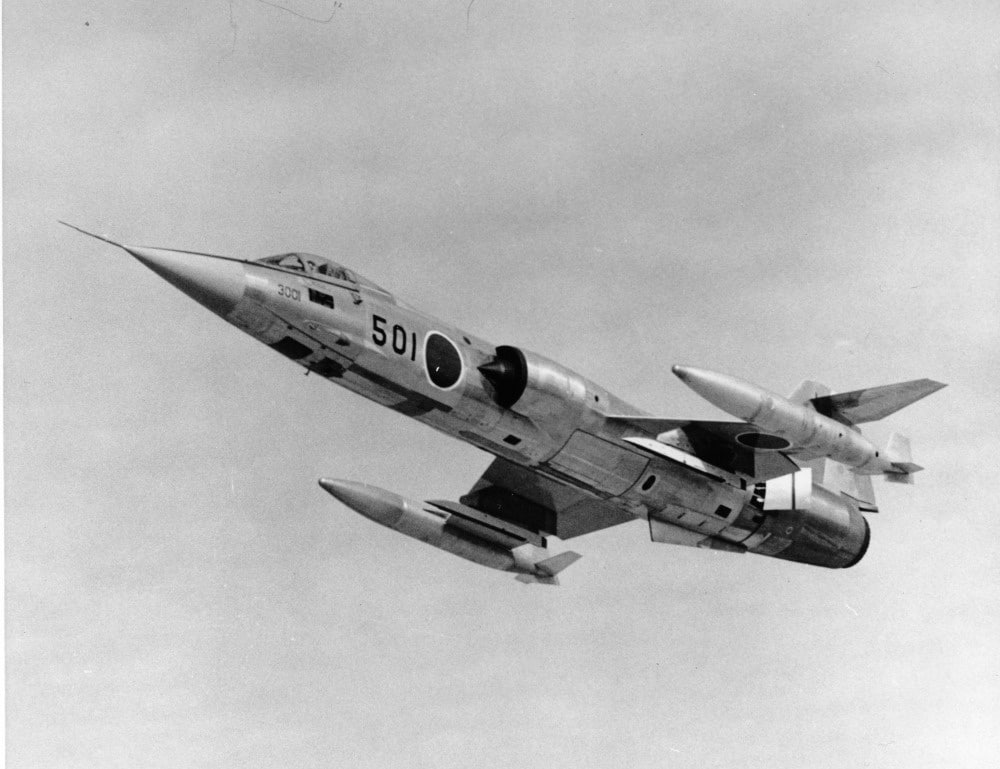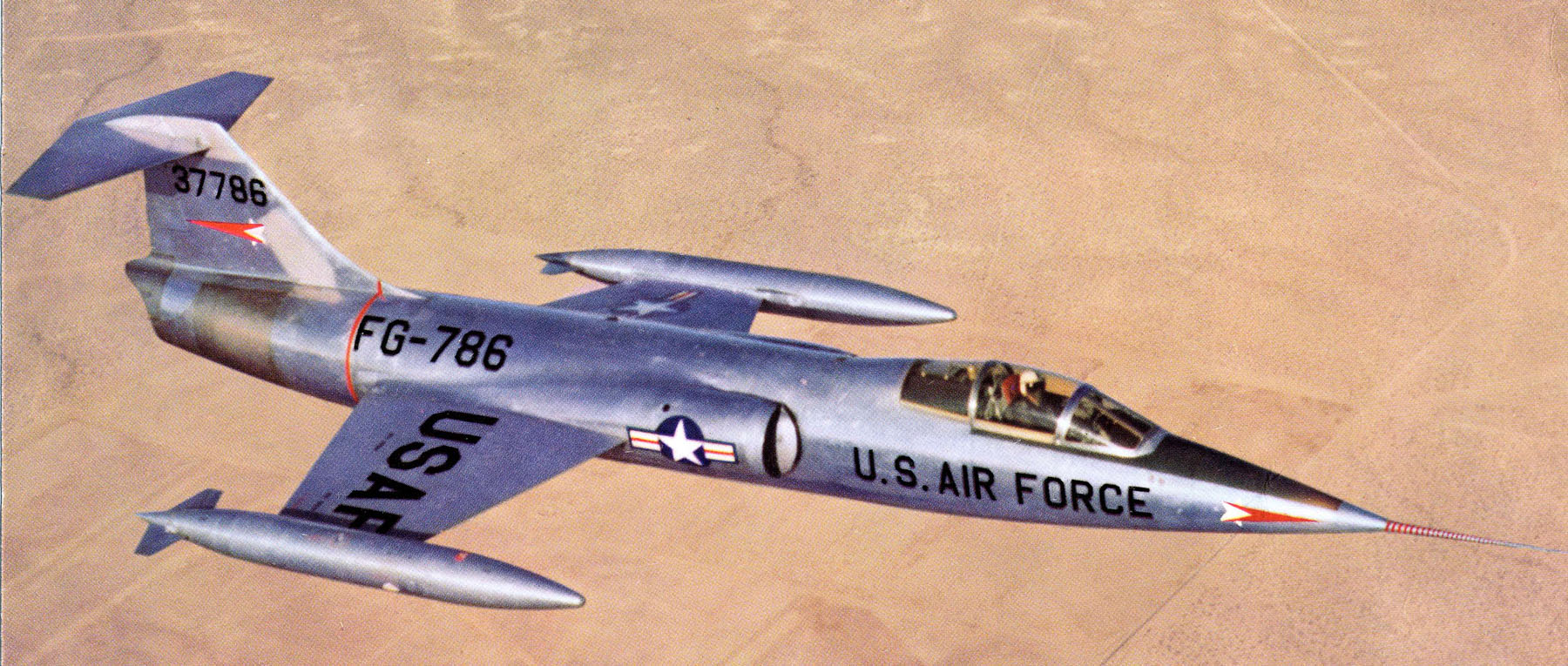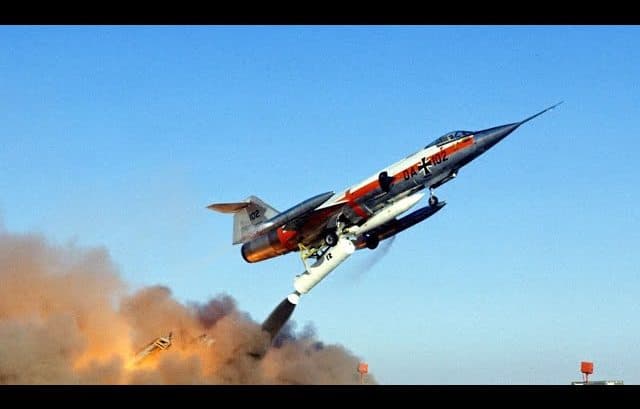The F-104 was a revolutionary plane that redefined the possibilities of high-altitude flight during the Cold War era. Developed by Lockheed, the aircraft was tailored to serve as an interceptor and tactical fighter aircraft for the US Air Force and its NATO allies.

Evening the Odds
One year after the outbreak of the war between North and South Korea, the USAF needed a dedicated interceptor that could even the odds against the latest Soviet jet-powered fighter – the Mikoyan Gurevich MiG-15.
Kelly Johnson, an innovative American aeronautical engineer and designer, interviewed seasoned fighter pilots. The pilots, in turn, provided him with valuable information that helped him develop the F-104 Starfighter.
Distinctive Shape
First flown in 1954, the Starfighter has been widely known for its distinctive shape and advanced design. It featured a slender fuselage, short wings, and a pointed nose that gave it a futuristic look.

Missile With a Man in It
The F-104 eventually earned the nickname, “The missile with a man in it.” It was equipped with a potent engine that could reach speeds up to Mach 2.2, as well as an altitude of over 100,000 feet.
Widowmaker
However, it was also challenging to fly; suffering high accident rates, earning it a reputation as a “Widowmaker.” Although it had a reliable platform, it was prone to engine failures.
West Germany paid a heavy price for it. Of the 916 planes it had bought, over 292 crashed, resulting in a loss of 115 lives.

NASA’s F-104 Starfighters
Interestingly, the F-104 was destined to serve NASA. From August 1956 onwards, NASA’s Dryden Flight Research Center flew the Lockheed F-104 Starfighter for different tests and missions.



